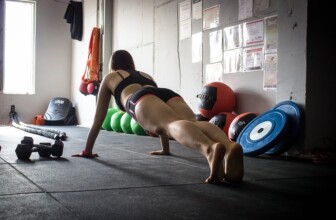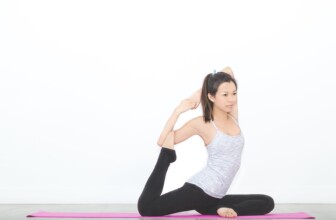Unlocking Your Potential: The Essential Guide to Flexibility Training for Enhanced Performance and Well-Being
Flexibility training is often overlooked in the pursuit of fitness and performance enhancement. However, it plays a crucial role in improving overall physical competence, reducing the risk of injury, and enhancing well-being. In this comprehensive guide, we will delve into various aspects of flexibility training, exploring its benefits, techniques, the science behind flexibility, and much more. Whether you're an athlete, casual gym-goer, or someone seeking better movement quality in daily life, this guide aims to provide you with valuable insights into unlocking your potential through flexibility training.
Table of Contents
- 1. Understanding Flexibility
- 2. The Importance of Flexibility Training
- 3. Types of Flexibility Training
- 4. How to Incorporate Flexibility Training
- 5. Real-Life Examples and Case Studies
- 6. Common Misconceptions About Flexibility
- 7. Q&A: Clarifying Common Inquiries
- 8. Resources
1. Understanding Flexibility
Flexibility refers to the ability of joints and muscles to move through their full range of motion (ROM). This characteristic is influenced by various factors, including muscle elasticity, joint structure, and even the nervous system. Flexibility is not one-size-fits-all; it varies significantly across individuals and can change with factors such as age, genetics, and physical activity level.
1.1 The Role of Joints and Muscles
Joints are the connection points for bones and can become more or less movable based on the surrounding muscle flexibility. Muscles themselves contain stretch receptors, called muscle spindles, that communicate with the central nervous system to regulate their length and tension. Understanding the role of these components is vital for effective flexibility training.
1.2 Types of Flexibility
Flexibility can be classified into three main types:
- Static Flexibility: The ability to hold a stretch without movement.
- Dynamic Flexibility: The ability to move through a range of motion without holding a position.
- Functional Flexibility: Flexibility is specifically useful in a certain activity or sport.
2. The Importance of Flexibility Training
Flexibility training provides numerous benefits, including:
- Injury Prevention: Improved flexibility can reduce the risk of injuries by allowing greater movement freedom.
- Enhanced Performance: Increased flexibility improves athletic performance by allowing muscles to work more efficiently.
- Improved Posture: Flexibility training can help correct muscle imbalances and improve posture.
- Reduced Muscle Soreness: Flexibility exercises can alleviate post-exercise soreness, aiding recovery.
- Mental Well-Being: Incorporating flexibility routines can provide a calming effect, reducing stress.
3. Types of Flexibility Training
Understanding the different types of flexibility training is key to harnessing its benefits effectively. Here are several popular modalities:
3.1 Static Stretching
This involves holding a stretch for a period, usually between 15 to 60 seconds. Static stretching is often recommended post-exercise, helping to enhance flexibility and cool down after workouts.
3.2 Dynamic Stretching
Dynamic stretching involves moving parts of your body and gradually increasing reach, speed of movement, or both. This type of stretching is more suitable for warm-ups as it prepares the muscles for more vigorous activity.
3.3 Proprioceptive Neuromuscular Facilitation (PNF)
PNF combines stretching and contracting of the muscle group being targeted. This method is effective in enhancing flexibility but often requires a partner to achieve maximum benefits.
4. How to Incorporate Flexibility Training
Incorporating flexibility training into your regimen can be done seamlessly. Here are some guidelines:
4.1 Frequency and Timing
A minimum of 2-3 times a week is recommended for flexibility training. Exercises can be performed either at the beginning as part of a warm-up or at the end as part of a cool-down routine.
4.2 Specific Exercises
Some effective flexibility exercises include:
- Cobra Stretch
- Hamstring Stretch
- Shoulder Stretch
- Quadriceps Stretch
- Hip Flexor Stretch
4.3 Integrating with Other Training
Flexibility training should complement strength and cardiovascular training for a well-rounded fitness routine. Consider scheduling flexibility training before strength workouts to pre-condition your muscles or after cardio sessions to help cool down.
5. Real-Life Examples and Case Studies
Examining real-life cases can provide insight into how flexibility training transforms physical performance and overall health.
Case Study 1: Elite Athlete
An Olympic sprinter improved their performance significantly after incorporating dynamic flexibility drills into their training. By focusing on specific stretches that targeted the hip flexors and hamstrings, they enhanced their stride length and reduced muscle tension, leading to faster race times.
Case Study 2: Office Worker
An office worker suffering from chronic lower back pain began a flexibility routine that focused on the hip flexors and hamstrings. After a few weeks, they reported reduced pain and improved posture, leading to greater productivity and comfort in their daily life.
6. Common Misconceptions About Flexibility
Despite the well-established benefits of flexibility training, several myths persist:
6.1 “Flexibility is Only for Dancers or Gymnasts”
Flexibility is essential for everyone, regardless of the sport or physical activity.
6.2 “Static Stretching Should Always Precede Workouts”
Static stretching is most beneficial after workouts when muscles are warm, not before.
7. Q&A: Clarifying Common Inquiries
Q1: How long should I hold a stretch?
A1: Typically, hold each stretch for about 15-60 seconds, ensuring to breathe deeply and relax into the stretch.
Q2: Can I stretch every day?
A2: Yes, daily stretching can be beneficial as long as you listen to your body and avoid pushing through pain.
Q3: What if I’m not flexible to start with?
A3: Flexibility is a skill that can be improved with consistent practice. Start slow and be patient.
8. Resources
| Source | Description | Link |
|---|---|---|
| American College of Sports Medicine | Guidelines on physical activities, including flexibility. | acsm.org |
| National Academy of Sports Medicine | Information on fitness and flexibility training. | nasm.org |
| PLOS One Journal | Research studies on flexibility and performance. | plosone.org |
| Yoga Journal | Guides and insights on flexibility through yoga. | yogajournal.com |
Conclusion
Flexibility training is an essential component of any fitness regime. With its myriad of benefits, including enhanced performance, injury prevention, and improved overall well-being, it is a practice worth prioritizing. As we evolve in our understanding of fitness, flexibility training is increasingly recognized as not just a supplementary activity but a crucial element of comprehensive health.
Key Takeaways:
- Flexibility training is beneficial for everyone, regardless of athletic level.
- Incorporating various forms of stretching can maximize benefits.
- Real-life experiences underscore the practical advantages of flexibility training.
As the field continues to advance, expect to see more focus on flexibility within training programs, potentially utilizing emerging technologies like smart wearables that can guide and track individual flexibility levels for personalized training. Many areas require further research, particularly regarding the long-term effects of flexibility training on athletic performance and general health.










